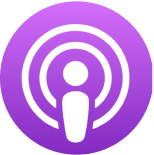The Unsung Hero of the High-Pressure Workplace? The Mighty Checklist
Checklist Manifesto Author Atul Gawande Explains How a Simple Checklist Can Minimize Mistakes in Stressful Work Conditions
The human brain loves to run on autopilot. That’s because this unconscious mode of behavior allows you to effortlessly complete actions you’ve already mastered (like driving a car or cooking your favorite meal) while saving energy for less familiar tasks.
While autopilot has its benefits, it comes with risks as well. For example, it can lead to mistakes when a familiar pattern changes, and the brain overlooks new information vital to completing the task correctly.
Autopilot can be especially dangerous in high-pressure workplaces, like hospitals, airfields, or emergency response offices. Thankfully, a simple solution can reduce human error caused by autopilot: the mighty checklist.
How Checklists Subvert Autopilot Mode
In The Checklist Manifesto, Atul Gawande shares the story of a patient who arrived at the emergency room with a stab wound. The hospital staff assumed that, as with most stab wounds, this one resulted from a knife attack. They treated him accordingly.
But the patient had extensive internal bleeding, and they couldn’t understand why their treatment wasn’t working. It wasn’t until someone finally asked the patient about the type of weapon that had caused his injury—a bayonet—that they could administer the proper treatment and stop the bleeding.
That unexpected variation—bayonet vs. knife—confused the staff when the patient’s symptoms failed to align with their expectations.
A simple checklist of questions and protocols could have helped the staff treat this patient more effectively. That’s because checklists ask questions your brain assumes it already knows how to answer, which forces it to slow down to accept new information rather than disregard it.
Complex Jobs, Simple Checklists
It might seem that highly trained individuals like surgeons, pilots, or engineers shouldn’t need checklists. Otherwise, what’s the point of all those years of training, residencies, and internships?
But lawsuits, malpractice cases, and workplace accidents are a reminder that even the smartest, best-trained professional can get distracted or miss a step in a complicated workflow.
A good checklist whittles down even the most complex jobs into simple, actionable steps that take the pressure off stressed workers in the following ways:
- Safeguard Against Human Error
Checklists force the brain off autopilot and provide fresh perspective when a pattern deviates from expectations. In addition, they prompt crucial reflection that is easy to skip in a busy environment.
- Promote Excellence in Execution
A checklist forces the brain to consistently apply each step of the process or procedure. The result is consistent, reliable outcomes. It can also help leaders hone in on particular moments or substeps where problems tend to arise and troubleshoot solutions to increase success or quality.
- Create Synergy Through Precise Coordination
Team members work more effectively in cultures where checklists help them precisely execute complex tasks. That’s because the checklist structure makes it easy to delegate subtasks and puts everyone on the same page regarding process, accountability, and desired outcomes.
Additionally, checklists downplay hierarchy and remove ego from the equation. You don’t need to be the Chief of Surgery to review a simple pre-surgical checklist and confirm each step as it's completed. Anyone on the team can take control of a checklist review process.
- Ensure Accuracy, Every Time
In any workplace, staff turnover and growth can risk the quality and accuracy of essential processes. Creating and refining checklists eases the stress of new hires and maintain accuracy and excellence during stressful periods of growth.
Reflect and Apply the Checklist Manifesto
Think of a task or process you use regularly in your workplace where a checklist might help with accuracy or excellence. Take ten or fifteen minutes to think through (and write down!) the steps and substeps to complete this process.
Tell us about your experience using a checklist on Twitter using #ChecklistManifesto.









.webp)

.webp)
